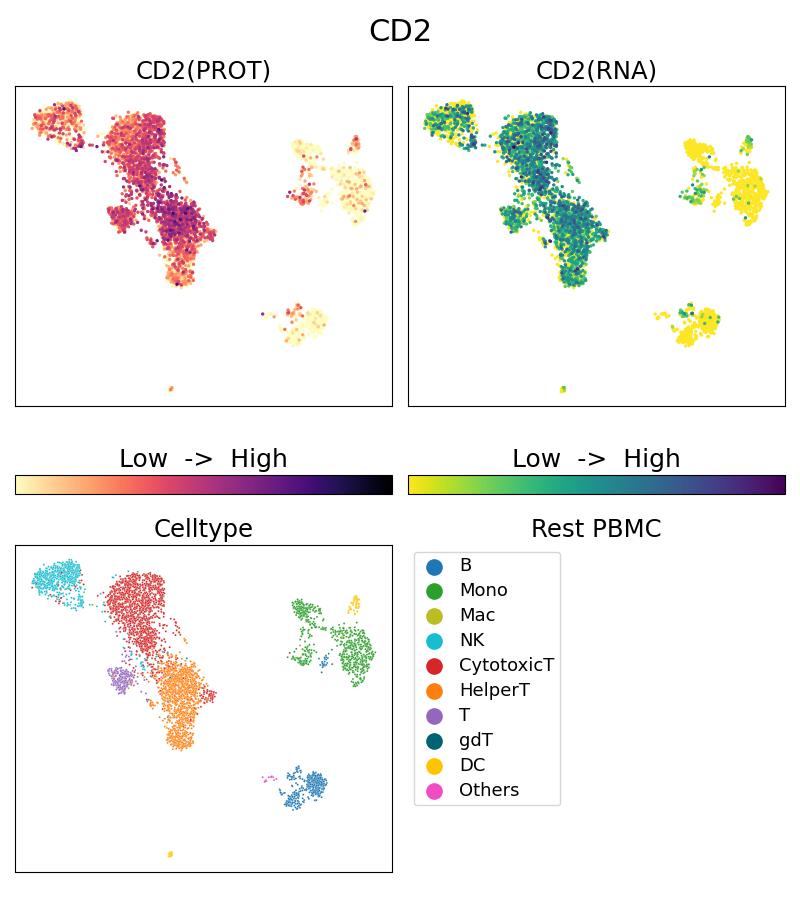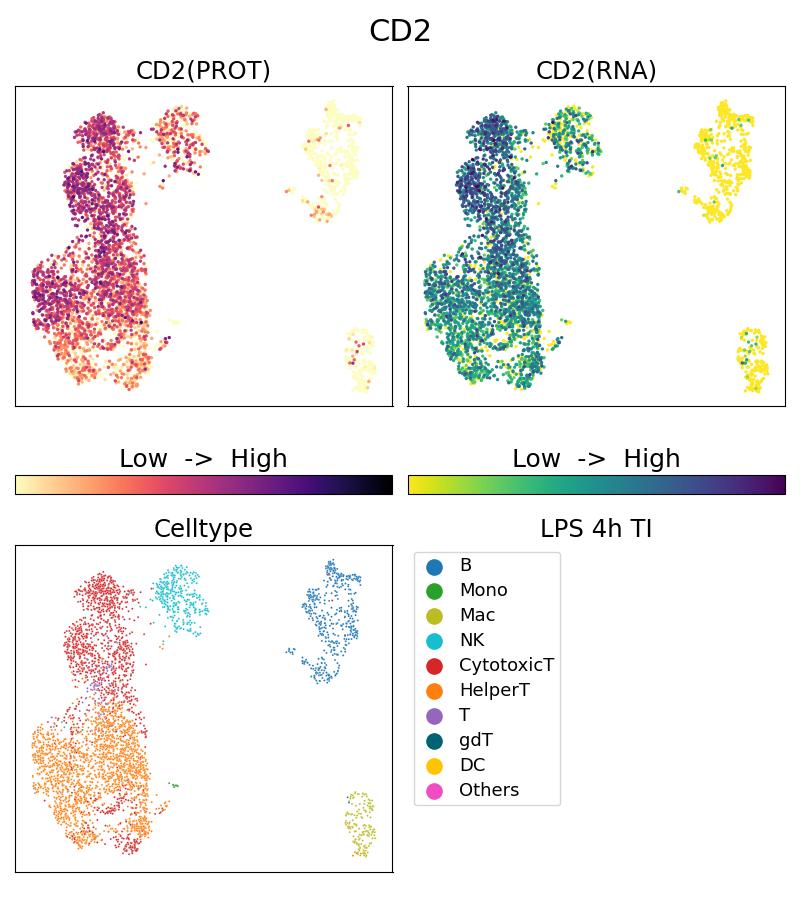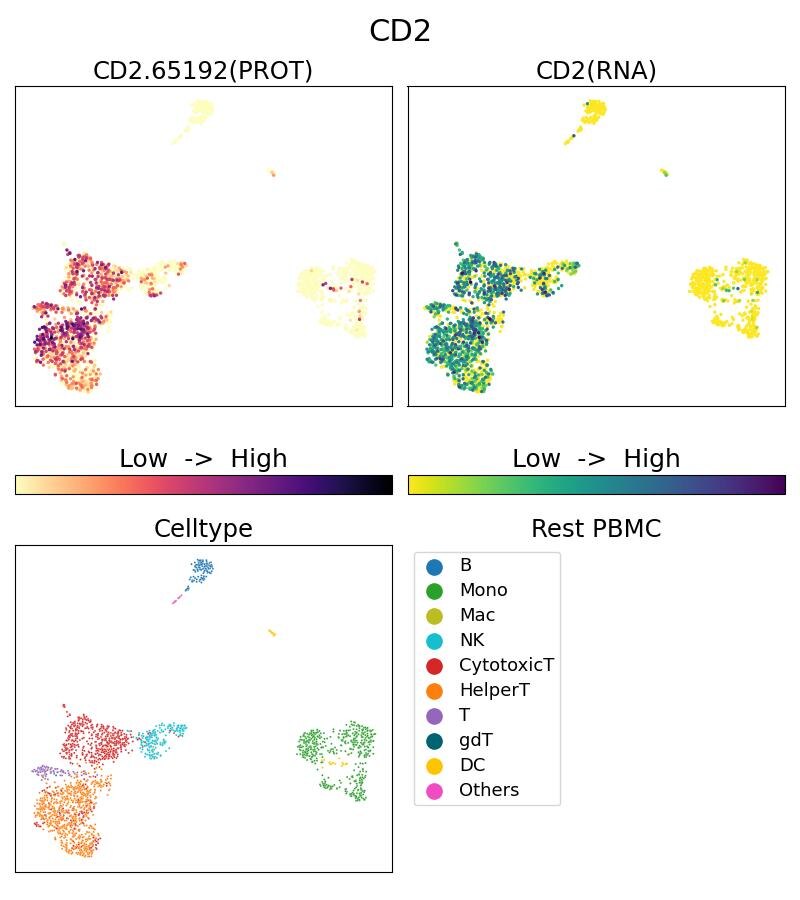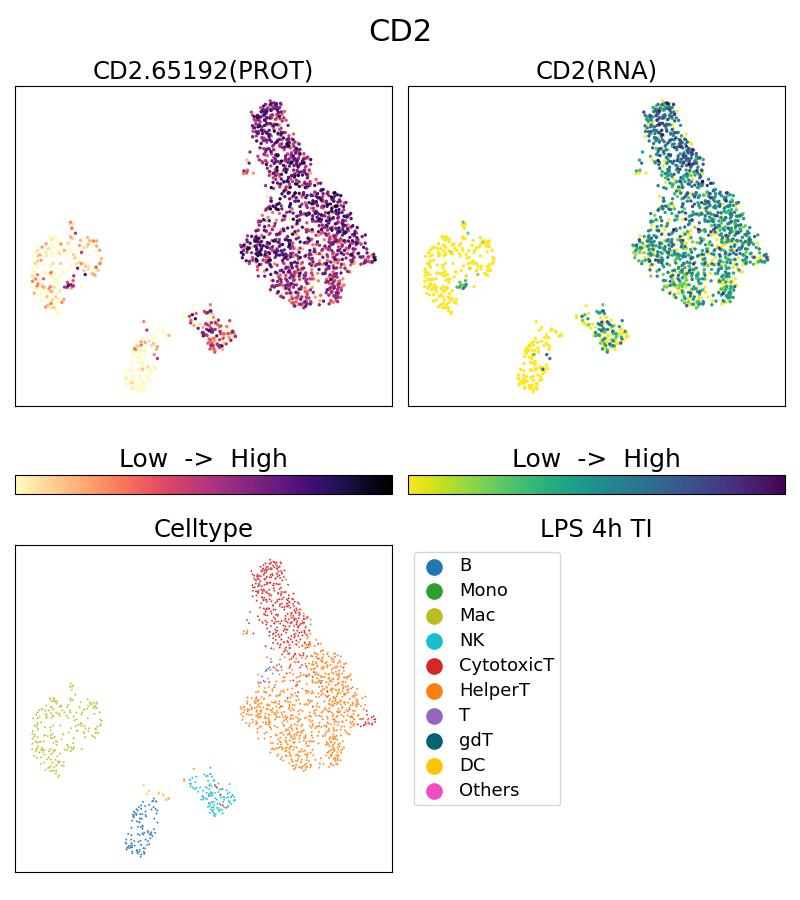Tested Applications
| Positive Single Cell (Intra) detected in | 10x Genomics Gene Expression Flex with Feature Barcodes and Multiplexing product. |
| Positive Single Cell detected in | 10x Genomics Gene Expression Flex with Feature Barcodes and Multiplexing product. |
Recommended dilution
| Application | Dilution |
|---|---|
| SINGLE CELL (INTRA) | <0.5ug/test |
| SINGLE CELL | <0.5ug/test |
| It is recommended that this reagent should be titrated in each testing system to obtain optimal results. | |
Product Information
G65192-1-5C targets CD2 in Single Cell (Intra), Single Cell applications and shows reactivity with Human samples.
| Tested Reactivity | Human |
| Host / Isotype | Mouse / IgG1, kappa |
| Class | Oligo Conjugate |
| Type | Monoclonal |
| Immunogen |
N/A Predict reactive species |
| Full Name | MultiPro® 5CFLX Anti-Human CD2 (TS1/8) |
| Calculated Molecular Weight | 351 aa, 39 kDa |
| GenBank Accession Number | BC033583 |
| Gene Symbol | CD2 |
| Gene ID (NCBI) | 914 |
| ENSEMBL Gene ID | ENSG00000116824 |
| RRID | AB_3673930 |
| Conjugate | 5CFLX |
| Full Oligo Sequence | CGGAGATGTGTATAAGAGACAGTAGAGACAGTTATAACCCATATAAGAAA |
| Barcode Sequence | TAGAGACAGTTATAA |
| Form | Liquid |
| UNIPROT ID | P06729 |
| Storage Buffer | PBS with 1mM EDTA and 0.09% sodium azide , pH 7.3. |
| Storage Conditions | 2-8°C Stable for one year after shipment. |
Background Information
CD2 is a cell surface glycoprotein present on a majority of thymocytes, all mature T cells and subset of NK cells but not on B lymphocytes. It is a pan T-cell marker. CD2 interacts with lymphocyte function-associated antigen (LFA-3/CD58) and CD48/BCM1 to mediate adhesion between T-cells and other cell types. CD2 is implicated in the triggering of T-cells, the cytoplasmic domain is implicated in the signaling function.
Protocols
| MultiPro™ Cell Surface and Intracellular Staining Protocol | Download protocol |
| 10x Genomics Cell Surface Protein Only Staining Protocol | Download protocol |










